Self-Management
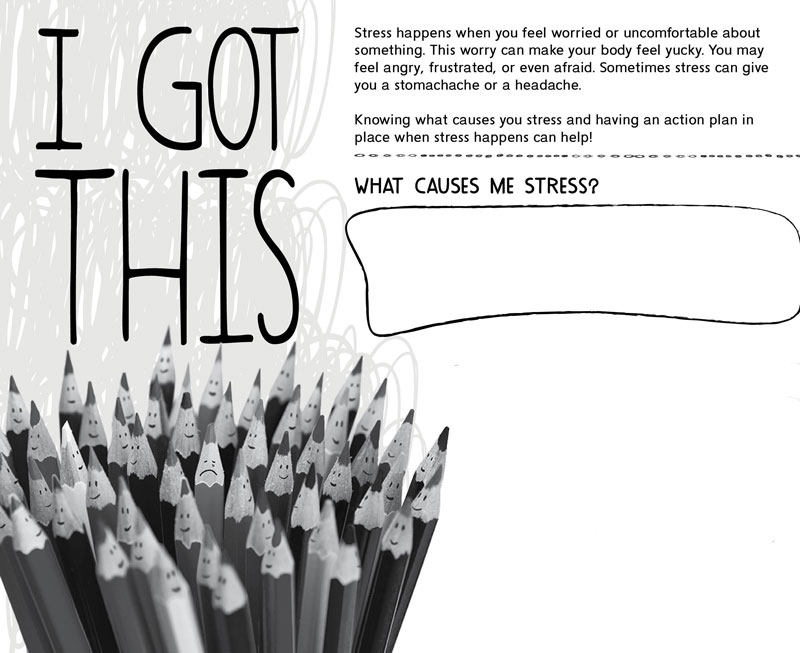
Find this activity in the student portfolio
Objective: Students will be able to make a plan for managing stress.
Estimated Duration: 20 minutes
Description: Stress is the body’s reaction to a challenge. A little bit of stress is ok. Especially if that stress is positive stress. Positive stress responses from events such as changing schools and meeting new friends can help students learn and grow.
But when students are exposed to repeated stressful events without the tools to manage what they are feeling, stress can become emotionally and physically difficult.
Just like adults, when students’ stress goes unmanaged it can cause anxiety, depression, and have harmful physical effects.
This activity will help students create a stress management plan. They will list their stressors, name a person who they can talk to, choose positive self-talk to help them stay calm, and pick activities to make them feel better.
Teachable Moments: There are many ways you can help students manage stress:
- Host morning meetings to stay connected with students and help them to begin their day with a positive experience.
- Talk about and model positive ways to manage stress like getting enough sleep, doing yoga or breathing exercises, reading a book, or going for a walk.
- Schedule time to organize. Students' desks and backpacks can get quickly messy and unorganized. Taking time out to throw away old papers and sharpen pencils can help students feel more in control.
- Remind students that one of the best ways to avoid stress is to have a balanced life. When they make good decisions about how to spend their day, they can naturally feel less stressed. Share with students that the idea is if they take time to get enough sleep, eat healthy, exercise, and have fun then they will most likely feel less stressed out.
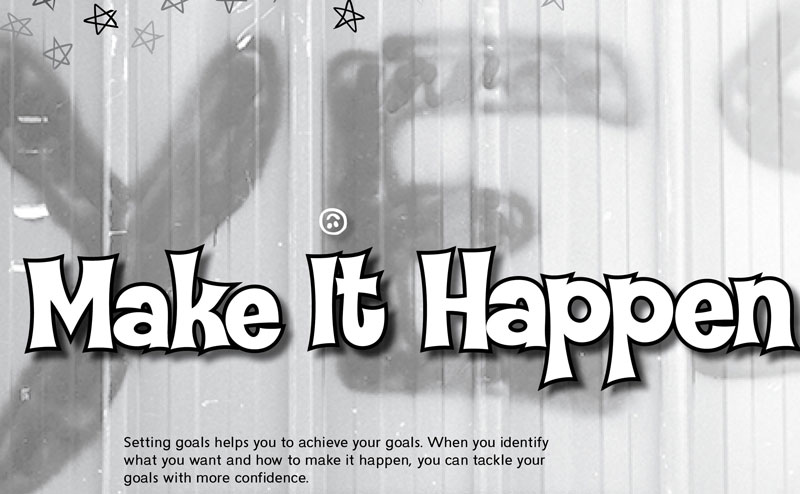
Find this activity in the student portfolio
Objective: Students will be able to set and work toward achieving a personal goal.
Estimated Duration: 20-25 minutes
Description: Setting goals helps students become more confident in themselves, helps them make better decisions in their life, and gives them motivation. Setting and achieving goals can really be enormously powerful for students.
By measuring and celebrating their achievements, students can see what they have done over a period and what they can do. Seeing their results gives them assurance that they can achieve even higher goals in the future.
It is important that you discuss with students the importance of setting goals that are realistic. Setting small, achievable goals that can be achieved quickly will help them understand the process of setting and achieving goals.
Once they grasp this concept, they can set even bigger goals. Make sure the goals are measurable, achievable, as well as specific.
This activity has students set a goal and create a vision board for their goal. They will decorate their vision board with words and pictures from old magazines or other media. They could also use stickers or cards.
Students can also draw and doodle on their vision board. Remind them they should include anything that inspires them. Suggest students come back to this page to remind them of their goal.
Teachable Moments: There are many ways you can help students set and achieve goals:
- Help students set clear and measurable goals.
- Help create a specific action plan for each goal.
- Have students read their goals often and visualize themselves accomplishing them.
- Have students reflect on their progress to see if they are on target.
- Help students revise their action plans if needed.
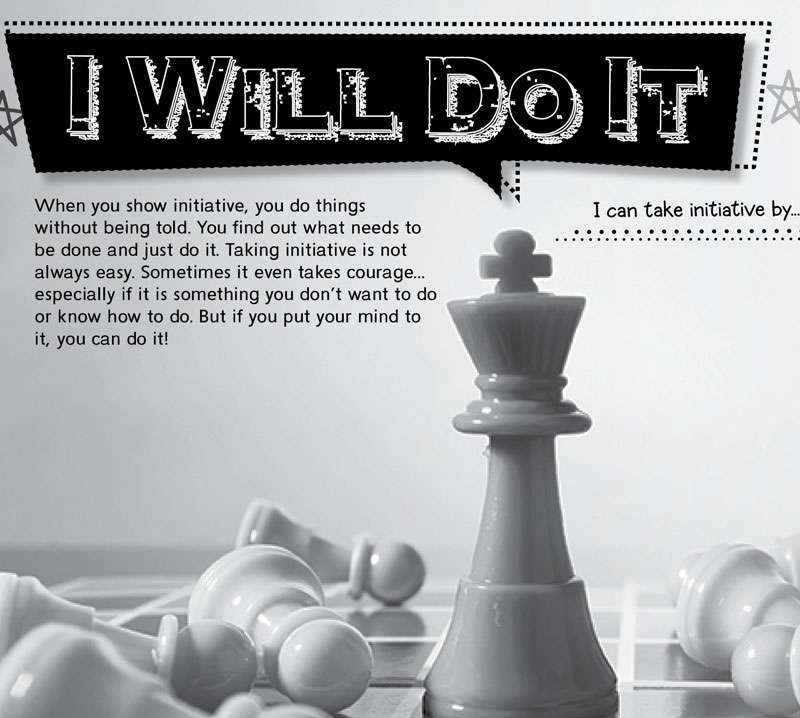
Find this activity in the student portfolio
Objective: Students will be able to understand the importance of taking initiative.
Estimated Duration: 20 minutes
Description: When you take initiative, you do things without being told. It means finding out what needs to be done and doing it. It is the link between thinking about something and actually doing it.
It is important to teach students to take initiative. Initiative is a quality of a good leader, and having it promotes teamwork and cooperation.
Let students know that sometimes taking initiative is not always easy. Sometimes it even takes courage, especially if it involves speaking up for themselves or another. That’s because taking initiative sometimes means you have to be willing to take a risk even though your efforts may fail.
This activity will help students brainstorm ways they can take initiative at home, at school, and in their community. They will write about what they can do and what will happen if they do/do not take initiative.
Teachable Moments: There are many ways you can help students take initiative:
- Let students help; even if you know they will struggle. The reward when success happens can teach them that taking the first step feels good.
- Encourage them to get back on their feet after a fall (because you believe in them).
- Be a role model; show students how to have courage to do something you are unsure about.
- Let students choose activities; it gives them internal rewards.
- Help students solve their own problems and navigate obstacles.
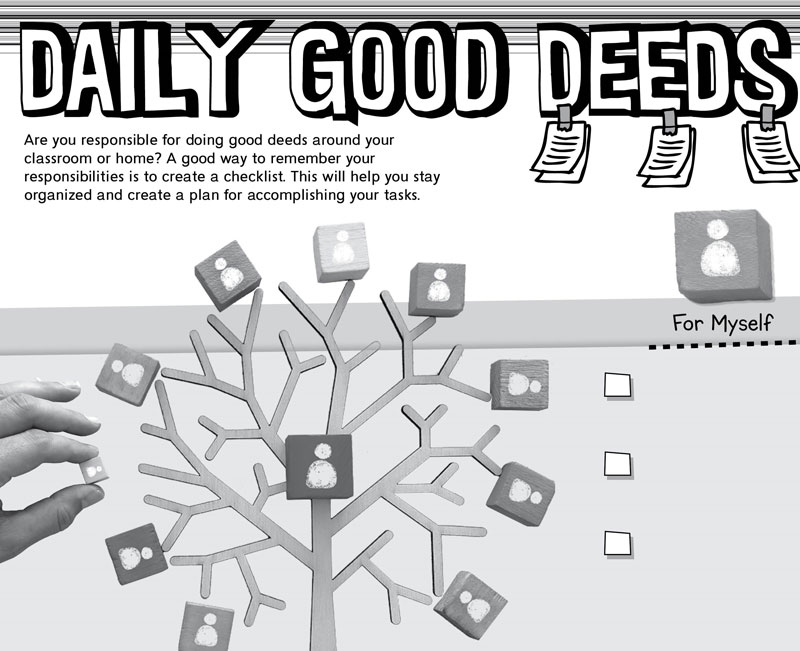
Find this activity in the student portfolio
Objective: Using planning and organizational skills
Estimated Duration: 20 minutes
Description: Being organized and knowing how to plan are important skills for students since they help them learn how to prioritize activities, set and achieve goals, and reduce stress.
Teaching students the importance of organizational and planning skills can have a significant impact on a student's ability to succeed throughout his or her academic career.
Staying organized requires a deliberate way of thinking through things that doesn't come naturally to some students. When a student receives directions for an assignment, they first must think about what is being asked of them, and then they need to come up with a plan for how to complete it.
A student who has solid organizational skills may be able to go through this process without even realizing they are doing it. But a student who struggles with organization may require help to train their brain to think this way.
This activity will help students train their brain to stay organized and create a plan for accomplishing their tasks.
Students are asked to make a list of the good deeds they do throughout the day for themselves, their home, their school, and for others. They can come back to these checklists throughout the year, so they don’t forget them.
Teachable Moments: There are many ways you can help students plan and use organizational skills:
- Have students use checklists. Get them in the habit of using “to-do” lists.
- Help students sort and organize their homework assignments.
- Have students set a designated study time and place.
- Have students keep an organized notebook.
- Have students use a planner.
- Check-in weekly with students to make sure they are using their planner effectively.
- Schedule a cleaning time for students.
Foldable®: Action Moments
Estimated Duration: 25-30 minutes
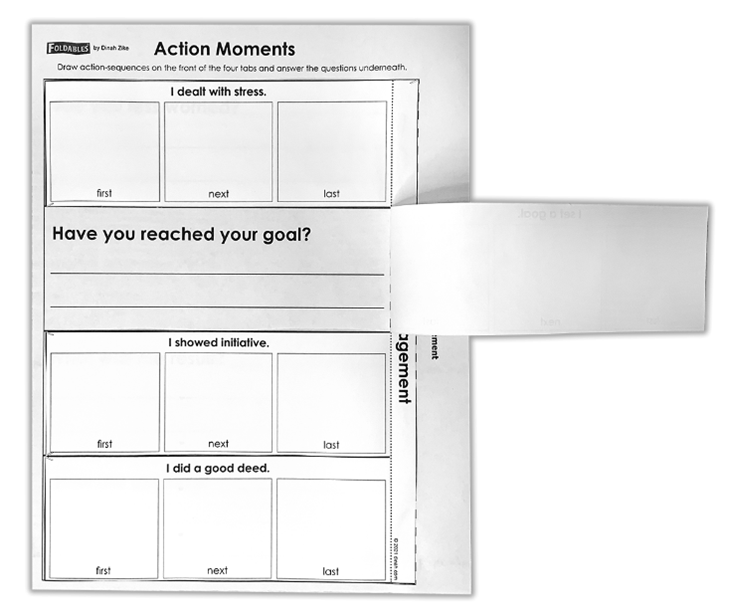
- Cut along the outside solid black lines of the large Self-Management Foldable. DO NOT cut the middle black cut-lines at this time.
- Fold along the long, dotted line on the right of the rectangle to form an anchor tab. Glue the folded tab on top of the gray Self-Management anchor tab space in the student book. Allow the glue to dry briefly while discussing the four titles on the page.
- NOW cut along the middle three solid black lines to form four tabs. On the front of the tabs, have students respond to each of the prompts by drawing a picture.
- Under the tabs, students answer the related questions.
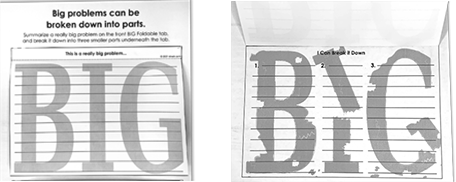
- Cut along the outside solid black lines of the This is a really big problem… Foldable. On the front of the tab, have students outline or summarize a big problem they recently dealt with or one they need to deal with now.
- Fold along the dotted line at the top of the Foldable to form an anchor tab. Glue the folded tab on top of the gray This is a really big problem… anchor tab space in the student book.
- Discuss the graphic under the tab – the word BIG has been broken into parts. Discuss how this represents a problem-solving technique, and have students break their big problem down into three smaller parts. Students record their steps in the private writing area covered by the tab.

- Cut along the outside solid black lines of the I am courageous Foldable. On the front of the tab, have students observe the graphic of the lion and discuss the meaning of the sentence: You can’t spell coUrage without you!
- Fold along the dotted line at the left edge of the Foldable to form an anchor tab. Glue the folded tab on top of the gray anchor tab space in the student book.
- Under the tab, have students record one or more ways in which they are courageous. This is a private writing area covered by a tab.
Go to other SEL competencies in this book (Intermediate - Grades 3–4):
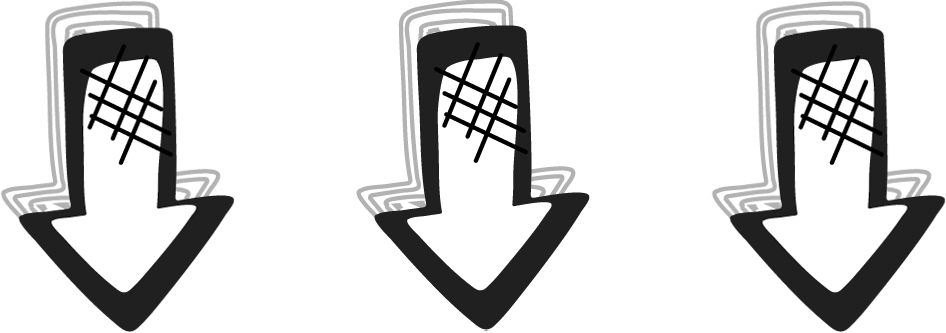
The teaching suggestions only work in accompaniment with the student portfolio, which has all the activity pages.
The teaching suggestions here are also available within a PDF of the entire teacher's manual.